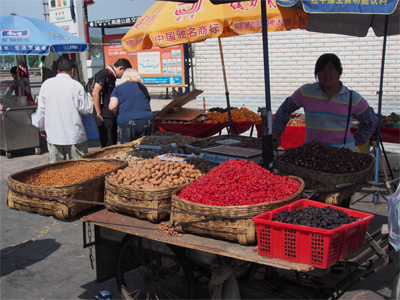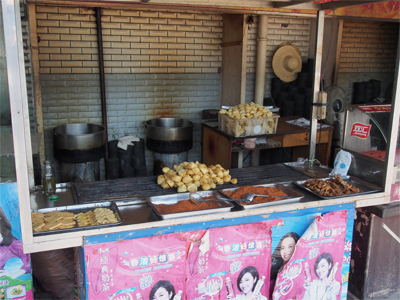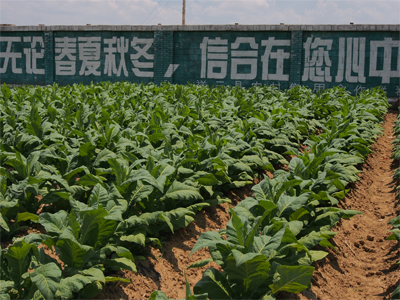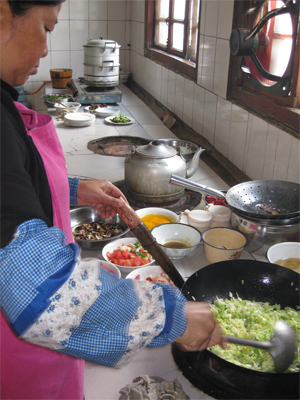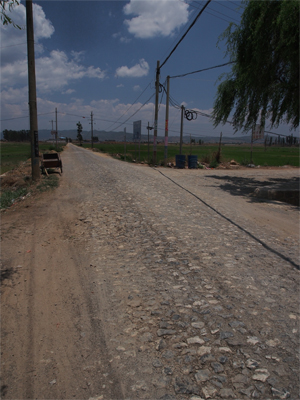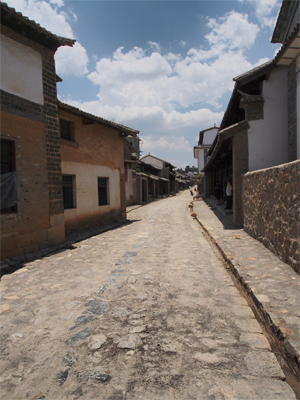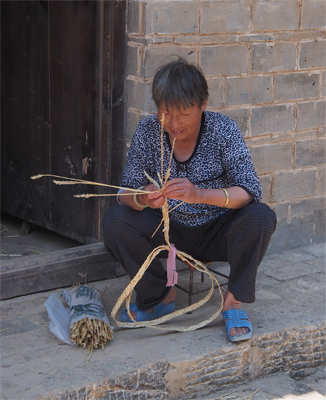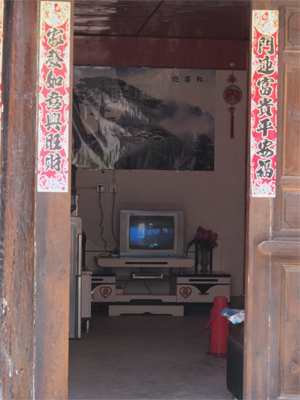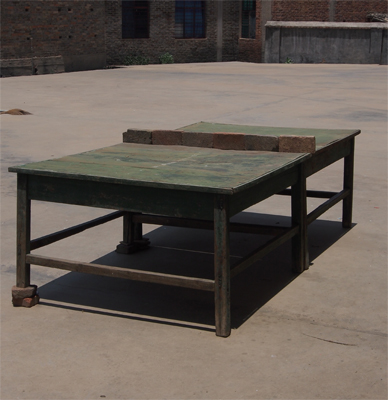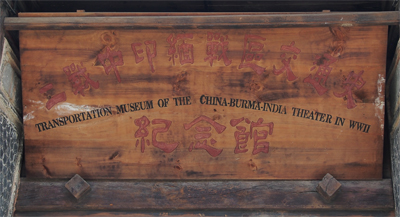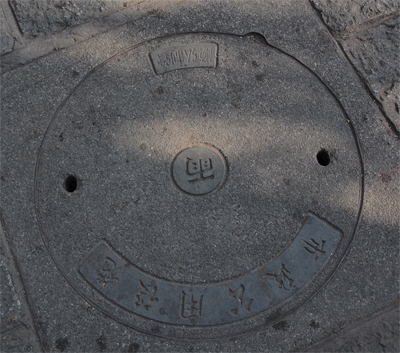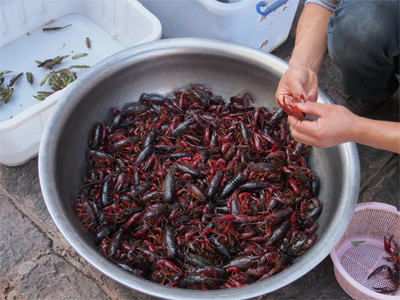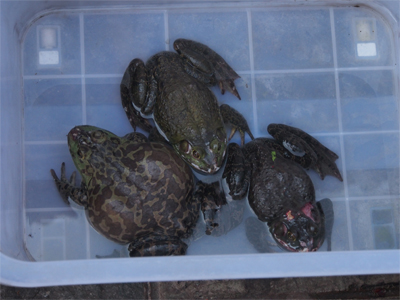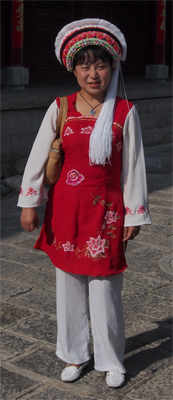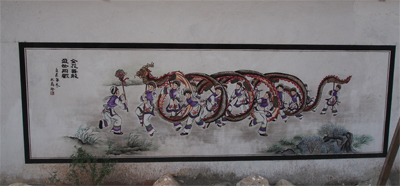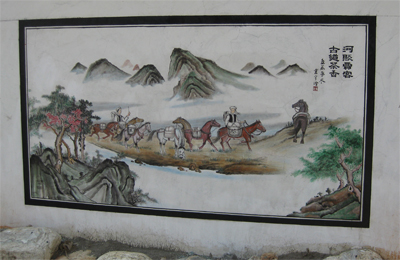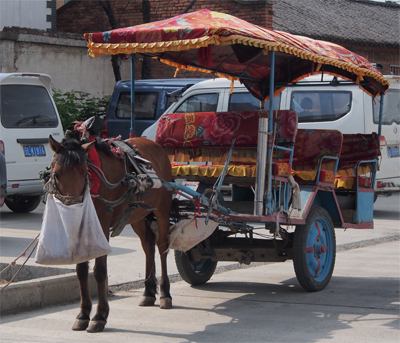Sun., 6/16/13 - Kunming to Dali
We drove west toward Dali through 100 kilometers of farm fields on a three-lane highway and then entered mountains and forests of young deciduous trees. There were crops growing everywhere possible.
In the parking lot at our first "rest stop" women were selling nuts, fruits, veggies, and cooked meats. I bought some lady finger bananas (I wanted some potassium) and Johnson bought some dried fruit he called "red mountain berries." They were good, not too sweet but soft.
Red mountain berries
|
Food for sale |
We stopped outside of Yunnanyi to look at a tobacco field. The government owns the land, the farmer buys the seed and grows the tobacco and dries the leaves by hanging them in towers with an oven at the base. They are contracted to sell so much to a cigarette company and pay a tax on the profit to the government. Tobacco grows well here and the Chinese are still smokers.
|
Tobacco field
|
Preparing our lunch - it was good!
|
We ate lunch at a converted tea-horse roadhouse on the Old Burma Road. There are only about 100 yards of the Old Burma Road remaining. The road was built using huge man powered rollers to crush in rocks to make a flat surface.
|
Burma Road
|
Stone rollers used to roll out the crushed rock surface of the road |
In Yunnanyi we walked through the town gate and along a street with a solid row of wooden houses. On the entry doors were pictures of the fabled warlords who were keeping out ghosts. We looked at a Confucian Temple and then entered the village school grounds.
|
Yunnanyi street scene
|
Door with picture of warlord who is protecting the house
|
Woman weaving baskets |
House with TV
|
Brooms used for sweeping the school yard |
Ping pong table with a creative net - bricks
|
The next stop was the Yunnan Horse Caravan Culture Museum, which was once a hotel for the travelers, merchants, and traders going through Yunnan on the way to Dali, Lhasa, Beijing, Kunming, Burma, or Puer. Puer is where the famous black tea is still grown. The museum is in the 200-year-old remains of a roadhouse with a reception room, space for the horsemen to cook and sleep, the horse stable, and a restaurant. Hanging on the walls were packsaddles and items carried along the trade roads. It was interesting, but a shame it is not better preserved.
|
Yunnan Horse Caravan Cultural Museum
|
Creatively done map of horse caravan routes |
Flag of a caravan
|
Chinese symbol representing the horse |
We walked through the Flying Tigers’ Museum. The American Army built airstrips in the nearby fields and flew supplies from British Burma to the Chinese who were fighting Japanese intrusion during WWII. The Japanese captured Burma, closing off ground transportation of goods. During the war, 609 planes and 1500 Chinese and American pilots were lost because of the difficulty of flying those old planes over the Himalayan Mountains. After visiting the museum, we went to the home of Mr. Lui, the only remaining villager who worked for the Army Air Force during WWII. This 86 year-old man described what he did as a teenager during the war. He was fascinating as he talked about real history.
|
|
Transportation of the China-Burma-India Theatre in WWII and Museum of the Flying Tigers |
Mr. Lui and our guide, Johnson
|
After returning to Dali, we went for a short orientation walk in the old city with our local guide, Lisa.
|
|
Manhole cover in Dali
|
Crayfish for sale |
Insects for someone's dinner
|
Very fat frogs - for dinner |
Mon., 6/17/13 - Dali
|
|
Lisa in traditional Bai costume |
Traditional Bai dress She wears a red pinafore over white sleeves and slacks. The red color means she is less than 40 years old. From 40 to age 70 women wear blue and after 70, a very dark blue. Her headdress tells several stories. If the thick white tassel is long, she is single. When a boy touches her tassel it is part of their engagement process. Lisa is married, so her tassel is shorter. If her husband dies, it is cut off even shorter. The tassel hangs on the left side meaning she used her father's surname. If it is on the right side, the girl uses her mother's name, perhaps because she has no brothers to carry on the family name.
|
Bai murals |
Bai murals
|
Symbol of Communist China on the chalkboard - we saw very few of these
|
An electrical masterpiece |
Three-wheeled cart
|
Horse and cart - waiting for us? |
